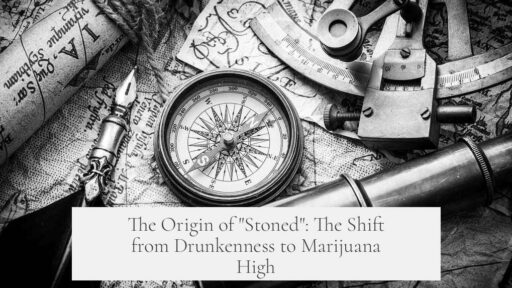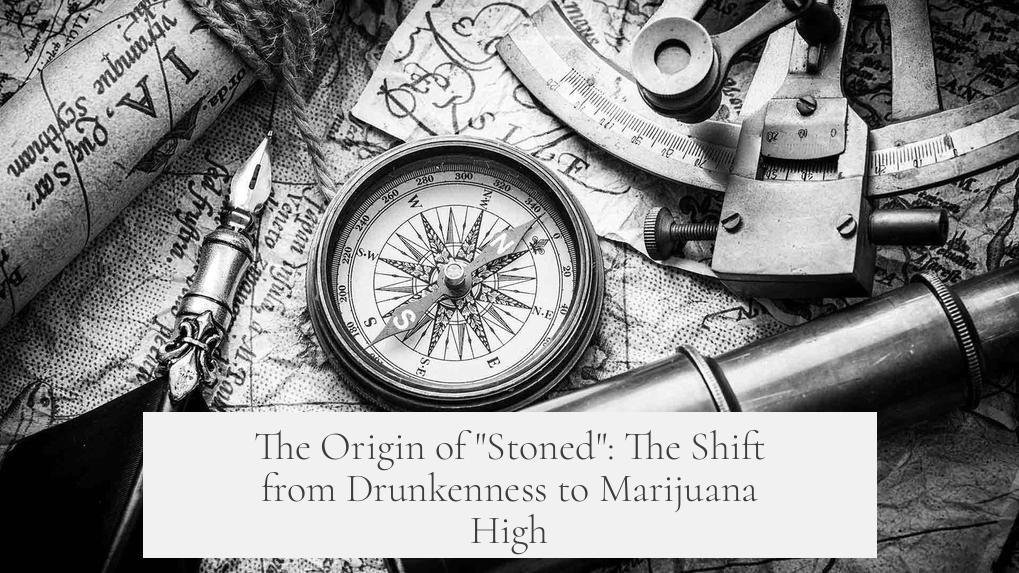The word “stoned” began to specifically mean being high on marijuana rather than drunk around the early 1950s, with the first documented use in this context recorded by the Oxford English Dictionary in 1953. This marked a clear semantic shift from earlier uses where “stoned” or phrases like “stone drunk” related to alcohol intoxication or a metaphor linked to physical punishment.
Before the 1950s, “stoned” primarily described someone extremely drunk or appearing battered, as if literally hit by stones. This usage dates back to the 1920s and 1930s. Expressions such as “stone drunk” or “out stone-cold” were common and clearly connected to alcohol intoxication. However, the phrase “stoned” alone as a direct synonym for being drunk was less clear and less frequently recorded.
The notable first citation linking “stoned” explicitly to drug influence appears in 1953, in the book Traffic in Narcotics, co-written by Harry Anslinger, the long-time commissioner of the Federal Bureau of Narcotics. Anslinger was a vocal opponent of marijuana during the 1930s to 1950s and sought to highlight its dangers. The OED entry cites the phrase “Stoned, under the influence of drugs,” attributing the new sense to this period.
Further examples reinforce the emerging cannabis connection. In 1956, crime writer Ed McBain used the term in a fictional dialogue from a police novel, where a character asks, “Are you stoned now, or can you read me?” Here, the word clearly implies drug influence, presumably marijuana. Another literary example from 1958 by Jim Schock describes being “stoned” after using “pot or tea,” slang terms for marijuana at the time.
In popular culture, the word “stoned” maintained a dual meaning through the 1960s. Ray Charles’ 1966 song Let’s Go Get Stoned originally referred to being drunk, illustrating overlapping uses. However, by the late 1960s and early 1970s, musicians like Bob Dylan popularized “stoned” in the marijuana sense with hits like Rainy Day Women #12 & 35, whose chorus “everybody must get stoned” became widely associated with cannabis use.
This semantic evolution parallels broader language trends. Words conveying intoxication often derive from metaphors relating to damage or impairment, such as “trashed,” “smashed,” or “blitzed.” The idea behind “stoned” likely connects to the sensation of heaviness or numbness—feeling like one’s limbs are made of stone, or a lifeless, immobile state similar to lying motionless on a couch.
Interestingly, “stoned” transitioned from a punishment metaphor (getting stoned with rocks) to a descriptive term for being heavily impaired, initially by alcohol and later by drugs like marijuana. It reflects how language adapts to cultural shifts and the emergence of new social phenomena, such as the rise of cannabis use in post-war America.
- Early 20th-century “stoned” related to heavy alcohol intoxication or a beaten state.
- In 1953, the Oxford English Dictionary first records “stoned” specifically meaning under drug influence.
- Harry Anslinger’s 1953 work played a key role by linking “stoned” to drug use, mainly marijuana.
- Mid-1950s usage in fiction confirms “stoned” as a term for marijuana intoxication.
- Popular music in the 1960s reflects the dual meanings and later solidifies “stoned” as marijuana-related.
- The term describes a heavy, sedative effect distinct from being “high,” which is more cerebral.
- The shift illustrates broader linguistic patterns where slang evolves with culture and substances.
This timeline offers a clear picture: “stoned” took on its marijuana-specific meaning predominantly in the early 1950s, shaped by media, law enforcement discourse, and evolving slang in popular culture. Before that, the word connected mainly to drunkenness or physical punishment metaphors.
When did “stoned” first mean being high on drugs rather than drunk?
The Oxford English Dictionary first cited “stoned” meaning under the influence of drugs in 1953. This was the earliest clear use linking the term to drug intoxication rather than alcohol.
What was the historical meaning of “stoned” before it referred to marijuana?
Before the 1950s, “stoned” or “stone drunk” typically described someone extremely drunk. It suggested a battered or worn-out appearance, like they had been hit with stones.
Who influenced the popular use of “stoned” related to drugs in the 1950s?
Harry Anslinger, head of the Federal Bureau of Narcotics, used the term in his 1953 book. He was known for his strong anti-marijuana stance and helped popularize this drug-related meaning.
How did popular culture in the 1960s affect the meaning of “stoned”?
Songs like Ray Charles’ “Let’s Go Get Stoned” and Bob Dylan’s “Rainy Day Women #12 & 35” amplified the term. By then, “stoned” could mean drunk or high, depending on the listener’s interpretation.
What is the difference between being “high” and being “stoned” on marijuana?
Being “high” refers to euphoric and cerebral effects of cannabis. Being “stoned” usually means feeling relaxed and sedated, often physically heavy or numb.




